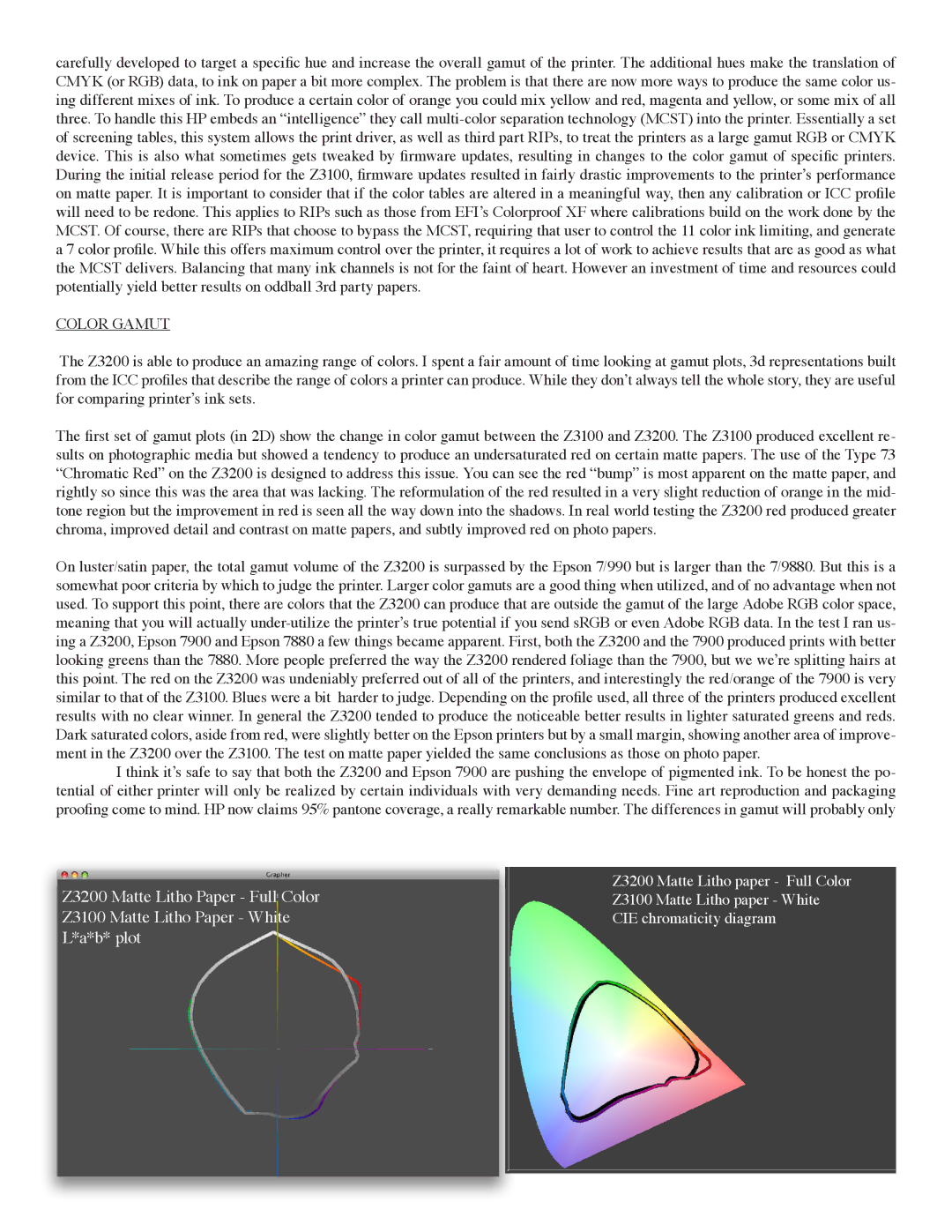
carefully developed to target a specific hue and increase the overall gamut of the printer. The additional hues make the translation of CMYK (or RGB) data, to ink on paper a bit more complex. The problem is that there are now more ways to produce the same color us- ing different mixes of ink. To produce a certain color of orange you could mix yellow and red, magenta and yellow, or some mix of all three. To handle this HP embeds an “intelligence” they call
Color Gamut
The Z3200 is able to produce an amazing range of colors. I spent a fair amount of time looking at gamut plots, 3d representations built from the ICC profiles that describe the range of colors a printer can produce. While they don’t always tell the whole story, they are useful for comparing printer’s ink sets.
The first set of gamut plots (in 2D) show the change in color gamut between the Z3100 and Z3200. The Z3100 produced excellent re- sults on photographic media but showed a tendency to produce an undersaturated red on certain matte papers. The use of the Type 73 “Chromatic Red” on the Z3200 is designed to address this issue. You can see the red “bump” is most apparent on the matte paper, and rightly so since this was the area that was lacking. The reformulation of the red resulted in a very slight reduction of orange in the mid- tone region but the improvement in red is seen all the way down into the shadows. In real world testing the Z3200 red produced greater chroma, improved detail and contrast on matte papers, and subtly improved red on photo papers.
On luster/satin paper, the total gamut volume of the Z3200 is surpassed by the Epson 7/990 but is larger than the 7/9880. But this is a somewhat poor criteria by which to judge the printer. Larger color gamuts are a good thing when utilized, and of no advantage when not used. To support this point, there are colors that the Z3200 can produce that are outside the gamut of the large Adobe RGB color space, meaning that you will actually
I think it’s safe to say that both the Z3200 and Epson 7900 are pushing the envelope of pigmented ink. To be honest the po- tential of either printer will only be realized by certain individuals with very demanding needs. Fine art reproduction and packaging proofing come to mind. HP now claims 95% pantone coverage, a really remarkable number. The differences in gamut will probably only
Z3200 Matte Litho Paper - Full Color
Z3100 Matte Litho Paper - White L*a*b* plot
Z3100 (white) andZ3200Z2100Matte(colorLithosolid)paper - Full Color Z3100 Matte Litho paper - White CIE chromaticity diagram
